Newport News, Virginia, Hgh State Clinic, Hgh Injections, Hrt Doctors
Newport News, Virginia Blood Testing Facilities
 Represents a LabCorp blood testing facility
Represents a LabCorp blood testing facility Represents a Quest Diagnostics blood testing facility
Represents a Quest Diagnostics blood testing facility

Nearby Labcorp Blood Testing facilities:
- Labcorp Center Distance: 5 m, 1511 Hardy Cash Drive, Hampton, Other, VA, 23666
- Labcorp Center Distance: 7 m, 3270 Academy Ave, Portsmouth, Other, VA, 23703
- Labcorp Center Distance: 8 m, 860 Omni Blvd Ste 201, Newport News, Other, VA, 23606
- Labcorp Center Distance: 17 m, 1020 Independence Blvd Ste 201, Virginia Beach, Other, VA, 23455
- Labcorp Center Distance: 18 m, 805 Battlefield Blvd N, Chesapeake, Other, VA, 23320
- Labcorp Center Distance: 23 m, 729 First Colonial Road, Virginia Beach, Other, VA, 23451
- Labcorp Center Distance: 53 m, 34-D Medical Park Blvd, Petersburg, Other, VA, 23805
- Labcorp Center Distance: 55 m, 4700 Puddledock Road Ste 200, Prince George, Prince George County, VA, 23875
- Labcorp Center Distance: 68 m, 1413 Tappahannock Blvd Ste 2, Tappahannock, Essex County, VA, 22560
- Labcorp Center Distance: 69 m, 8239 Meadowbridge Road Ste B, Mechanicsville, Hanover County, VA, 23116
- Labcorp Center Distance: 70 m, 2500 Pocoshock Place 105-106, Richmond, Chesterfield County, VA, 23235
- Labcorp Center Distance: 71 m, 7311 Boulder View Ln, Richmond, Chesterfield County, VA, 23225
- Labcorp Center Distance: 73 m, 5855 Bremo Road Suite 303, Richmond, Henrico County, VA, 23226
- Labcorp Center Distance: 74 m, 7001 Forest Ave Ste 202, Richmond, Henrico County, VA, 23230
- Labcorp Center Distance: 75 m, 2416 Colony Crossing Place, Midlothian, Chesterfield County, VA, 23112
- Labcorp Center Distance: 76 m, 13700 St Francis Blvd Ste 304, Midlothian, Chesterfield County, VA, 23114
- Labcorp Center Distance: 79 m, 611 Watkins Centre Pkwy 320, Midlothian, Chesterfield County, VA, 23114
- Labcorp Center Distance: 88 m, 500 Market St Ste 109, Pocomoke City, Worcester County, MD, 21851
- Labcorp Center Distance: 95 m, 202 E. Ferrell Street, South Hill, Mecklenburg County, VA, 23970
Nearby Quest Blood Testing facilities:
- Quest Center Distance: 5 m, 2040 Coliseum Drive, Hampton, Other, VA, 23666-3200
- Quest Center Distance: 7 m, 11717 Jefferson Ave, Newport News, Other, VA, 23606-1935
- Quest Center Distance: 15 m, 885 Kempsville Circle, Norfolk, Other, VA, 23502-3800
- Quest Center Distance: 18 m, 4876 Baxter Road, Virginia Beach, Other, VA, 23462-4404
- Quest Center Distance: 53 m, 34 Medical Park Blvd, Petersburg, Other, VA, 23805-9283
- Quest Center Distance: 75 m, 8002 Discovery Dr, Richmond, Henrico County, VA, 23229-8601
- Quest Center Distance: 76 m, 8921 Three Chopt Rd, Richmond, Henrico County, VA, 23229-4601
Virginia Hormone Replacement Therapy Services
The Conscious Evolution Institute specializes in medical treatments designed to restore hormone balance in order to help you live a healthier life. Many of the medical issues that we face that are often attributed to the aging process are actually the result of changes in hormone production which hinder our ability to live the lives that we want to live.
Low-T Treatments in Virginia
Do you feel like your sexual performance isn't up to snuff lately? If you are over the age of thirty, you may be suffering from a condition known as Andropause, which limits your ability to engage in happy and healthy sexual activity. The Conscious Evolution Institute can get you back on the right track and get you back to your peak sexual condition.
Testosterone Deficiency also has a negative impact on your health and wellness, and is associated with a number of health conditions that can increase your mortality risk and negative impact your quality of life, such as obesity, diabetes, and heart disease.
HGH Therapy in Virginia
Testosterone Deficiency is not the only age-related problem that can impact the lives of men and women. Human Growth Hormone Deficiency can also powerfully degrade human health and wellness. HGH is responsible for sustaining the optimal rate of cellular metabolism, and many physicians argue that Hormone Imbalance is one of the core causes of aging.
If you are suffering from symptoms associated with HGH Deficiency, including fatigue, foggy memory, lack of focus, and changes in body composition, Physician-Monitored, Bio-Identical HGH Therapy can restore your body's natural and youthful hormone balance to improve your life.
Sermorelin Therapy in Virginia
If you are interested in alternatives to Bio-Identical Growth Hormone, you may be interested in Sermorelin Acetate Therapy. This form of treatment provides similar results to HGH Injections, but sustains the optimal function of the pituitary. The Conscious Evolution Institute can help you decide which treatment is best for your health and your budget.
HCG Services in Virginia
Another treatment that we provide at the Conscious Evolution Institute is HCG Therapy for Weight Loss. If you are having major issues losing weight, or you are just looking for an effective method to help you shave off a few pounds, HCG Injections combined with a specialized nutrition plan can help you burn off those extra pounds safely and swiftly.
Major Cities in the State of Virginia
Virginia Beach
Virginia Beach is the largest city in the state of Virginia, located where the southern portion of the Chesapeake Bay and the Atlantic Ocean meet. Virginia Beach also has the distinction of having the Guinness Record for the longest designed pleasure beach on earth. Virginia Beach has a highly diverse economy, with an emphasis on both tourism and military occupations. The city also has a large agriculture sector.
The entire region, which includes Newport News, Chesapeake, and Norfolk, is often referred to as America's First Region. This is because it is one of the first heavily settled areas of the United States by British settlers, and the many cities rose together in the same period.
Norfolk
Norfolk, Virginia is located to the northwest of Virginia Beach, and is the second largest city in the state. Norfolk is home to the biggest United States Navy base on the planet, and is the center of the economy for the entire Hampton Roads region. Norfolk is one of the oldest cities in the United States, founded in 1619.
Although Virginia Beach is the vacation destination of the region, Norfolk is considered the seat of culture and opportunity for the area. Over the past decades, Norfolk has undergone a tremendous period of revitalization, providing national acclaim for the city and the region. Old Dominion is the largest and most acclaimed University in the city.
Chesapeake
Chesapeake, Virginia is located inland immediately west of both Norfolk and Virginia Beach. It is the third largest city in the state both by land area and population. Over recent decades, portions of Chesapeake have been undergoing a fairly rapid increase in population, as more and more people move to the area to take advantage of new suburban communities.
Chesapeake is widely acclaimed for its demographic and ecological diversity. It is a large city with a lot to offer. The city is more urban closer to Norfolk, but there is a heavy agricultural presence further from the core of the region, and there are large amounts of protected forests and ecological areas, including a large area of the Great Dismal Swamp.
Richmond
Richmond, Virginia is the capital of Virginia, and is the fourth largest city in the state. Richmond has been a very important city in American history, serving as an industrial hub early in the early years of the United States. When the Civil War broke out in 1865, Richmond served as the capital of the Confederacy for the majority of the war.
The capital is considered one of the best cities in the country for business, and is home to a number of Fortune 500 companies. Richmond also also has a number of universities, the most significant of which are the private Richmond University and the public Virginia Commonwealth University. The most famous historical resident of Richmond was Edgar Allen Poe, and there is a museum in the city which displays artifacts from his life and the time period.
Newport News
Newport News is located to the north of Norfolk Virginia, just across the James River. The city is also on the edge of the Virginia Peninsula. Norfolk is considered the central commercial hub of the region, but Newport News is the second most important business district. Like Norfolk, Newport News has a strong military presence, and is home to the merged Langley-Eustis joint Air Force and Army base.
The city is not limited only to military influence, however. Newport News is a very important transportation hub, with its most important location being the Newport News Marine Terminal.
All About Newport News, Virginia Geographic Area
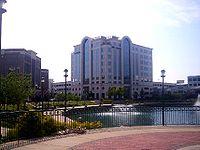
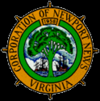
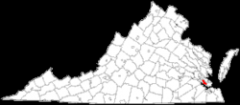
Newport News is an independent city located in the Hampton Roads metropolitan area of Virginia. It is at the southeastern end of the Virginia Peninsula, on the north shore of the James River extending southeast from Skiffe's Creek along many miles of waterfront to the river's mouth at Newport News Point on the harbor of Hampton Roads.
The area now known as Newport News was once a part of Warwick County. Warwick County was one of the eight original shires of Virginia, formed by the House of Burgesses in the British Colony of Virginia by order of King Charles I, in 1634. The county was largely composed of farms and undeveloped land until almost 250 years later. In 1881, 15 years of explosive development began under the leadership of Collis P. Huntington, whose new Peninsula Extension of the Chesapeake and Ohio Railway from Richmond opened up transportation along the Peninsula and provided a new pathway for the railroad to bring West Virginia bituminous coal to port for coastal shipping and worldwide export. With the new railroad came a terminal and coal piers where the colliers were loaded. Within a few years, Huntington and his associates also built a large shipyard. In 1896, the new incorporated town of Newport News, which had briefly replaced Denbigh as the county seat of Warwick County, had a population of 9,000. In 1900, 19,635 people lived in Newport News, Virginia; in 1910, 20,205; in 1920, 35,596; and in 1940, 37,067. In 1958, by mutual consent by referendum, Newport News was consolidated with the former Warwick County (itself a separate city from 1952 to 1958), rejoining the two localities to approximately their pre-1896 geographic size. The more widely known name of Newport News was selected as they formed what was then Virginia's third largest independent city in population. As of the 2010 census, the city population was 180,719 ranking it as Virginia's fifth largest incorporated city by population.
With many residents employed at the expansive Huntington Ingalls Shipbuilding, the joint U.S. Air Force-U.S. Army installation at Joint Base Langley aeEustis, and other military bases and suppliers, the city's economy is very connected to the military. The location on the harbor and along the James River facilitates a large boating industry which can take advantage of its many miles of waterfront. Newport News also serves as a junction between the rails and the sea with the Newport News Marine Terminals located at the East End of the city. Served by major east-west Interstate Highway 64, it is linked to others of the cities of Hampton Roads by the circumferential Hampton Roads Beltway, which crosses the harbor on two bridge-tunnels. Part of the Newport News/Williamsburg International Airport is in the city limits.
The original area near the mouth of the James River was first referred to as Newportes Newes as early as 1621.
The source of the name "Newport News" is not known with certainty. Several versions are recorded, and it is subject of popular speculation locally. Probably the best-known explanation holds that when an early group of Jamestown colonists left to return to England after the Starving Time during the winter of 1609 ae1610 aboard a ship of Captain Christopher Newport, they encountered another fleet of supply ships under the new Governor Thomas West, 3rd Baron De La Warr in the James River off Mulberry Island with reinforcements of men and supplies. The new governor ordered them to turn around, and return to Jamestown. Under this theory, the community was named for Newport's "good news." Another possibility is that the community may have derived its name from an old English word "news" meaning "new town." At least one source claims that the "New" arose from the original settlement's being rebuilt after a fire.
Another source gave the original name as New Port Newce, named for a person with the name Newce and the town's place as a new seaport. The namesake, Sir William Newce, was an English soldier and originally settled in Ireland. There he had established Newcestown near Bandon in County Cork. Newce sailed to Virginia with Sir Francis Wyatt in October 1621 and was granted 2,500 acres (1,012 ha) of land. He died two days later. His brother, Capt. Thomas Newce, was given "600 acres at Kequatan, now called Elizabeth Cittie." A partner Daniel Gookin completed founding the settlement.
Fiske writes:
... several old maps where the name is given as Newport Ness, being the mariner's way of saying Newport Point.
The fact that the name formerly appeared as "Newport's News" is verified by numerous early documents and maps, and by local tradition. The change to Newport News came about through usage, for by 1851 the Post Office Department sanctioned "New Port News" (three words) as the name of the first post office. In 1866 it approved the name as "Newport News", the current form.
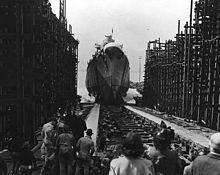
During the 17th century, shortly after founding of Jamestown, Virginia in 1607, English settlers explored and began settling the areas adjacent to Hampton Roads. In 1610, Sir Thomas Gates "took possession" of a nearby Native American village, which became known as Kecoughtan. At that time, settlers began clearing land along the James River (the navigable part of which was called Hampton Roads) for plantations, including the present area of Newport News.
In 1619, the area of Newport News was included in one of four huge corporations of the Virginia Company of London. It became known as Elizabeth Cittie, and extended west all the way to Skiffe's Creek (currently the border between Newport News and James City County. Elizabeth Cittie also included all of present-day South Hampton Roads.
By 1634, the English colony of Virginia consisted of a total population of approximately 5,000 inhabitants. It was divided into eight shires of Virginia, which were renamed as counties shortly thereafter. The area of Newport News became part of Warwick River Shire, which became Warwick County in 1637. By 1810, the county seat was at Denbigh. For a short time in the mid-19th century, the county seat was moved to Newport News.
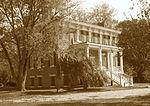
Newport News was a rural area of plantations and a small fishing village until after the American Civil War. Construction of the railroad and establishment of the great shipyard brought thousands of workers and associated development. It was one of only a few cities in Virginia to be newly established without earlier incorporation as a town. (Virginia has had an independent city political subdivision since 1871). Walter A. Post served as the city's first mayor.
The area which formed the present-day southern end of Newport News had long been established as an unincorporated town. During Reconstruction, the period after the American Civil War, the new City of Newport News was essentially founded by California merchant Collis P. Huntington. Huntington, one of the Big Four associated with the Central Pacific Railroad, in California, formed the western part of the country's First Transcontinental Railroad. He was recruited by former Confederate General Williams Carter Wickham to become a major investor and guiding light for a southern railroad. He helped complete the Chesapeake and Ohio Railway to the Ohio River in 1873.
Huntington knew the railroad could transport coal eastbound from West Virginia's untapped natural resources. His agents began acquiring land in Warwick County in 1865. In the 1880s, he oversaw extension of the C&O's new Peninsula Subdivision, which extended from the Church Hill Tunnel in Richmond southeast down the peninsula through Williamsburg to Newport News, where the company developed coal piers on the harbor of Hampton Roads.
His next project was to develop Newport News Shipbuilding and Drydock Company, which became the world's largest shipyard. Opened as Chesapeake Dry Dock & Construction Company, the shipbuilding was intended to build boats to transition goods from the rails to the seas. With President Theodore Roosevelt's declaration to create a Great White Fleet, the company entered the warship business by building seven of the first sixteen warships. Today, the shipyard holds a dominant position in the American warship construction business.
In addition to Collis, other members of the Huntington family also played major roles in Newport News. From 1912 ae1914, his nephew, Henry E. Huntington, assumed leadership of the shipyard. Huntington Park, developed after World War I near the northern terminus of the James River Bridge, is named for him.
Collis Huntington's son, Archer Milton Huntington and his wife, sculptor Anna Hyatt Huntington, developed the Mariners' Museum beginning in 1932. They created a natural park and the community's Lake Maury in the process. A major feature of Newport News, the Mariners' Museum has grown to become one of the largest and finest maritime museums in the world.
In 1958, the citizenry of the cities of Warwick and Newport News voted by referendum to consolidate the two cities, choosing to assume the better-known name of Newport News. The merger created the third largest city by population in Virginia, with a 65 square miles (168 km2) area. The boundaries of the City of Newport News today are essentially the boundaries of the original Warwick River Shire and the traditional one of Warwick County, with the exception of minor border adjustments with neighbors.
The city's original downtown area, located on the James River waterfront, changed rapidly from a farm trading town to a new city in the last quarter of the 19th century. Development of the railroad terminal, with its coal piers, and other harbor-related facilities, and the shipyard, all brought new jobs and workers to the area. Although fashionable housing and businesses developed in downtown, the increase in industry and the development of new suburbs both pushed and pulled retail and residential development to the west and north after World War II. Such suburban development was aided by national subsidization of highway construction and was part of a national trend to newer housing.
Despite city efforts at large-scale revitalization, by the beginning of the 21st century the downtown area consisted largely of the coal export facilities, the shipyard, and municipal offices. It is bordered by some harbor-related smaller businesses and lower income housing.
Newport News grew in population from the 1960s through the 1990s. The city began to explore New Urbanism as a way to develop areas midtown. City Center at Oyster Point was developed out of a small portion of the Oyster Point Business Park. It opened in phases from 2003 through 2005. The city invested $82 million of public funding in the project. Closely following Oyster Point, Port Warwick opened as an urban residential community in the new midtown business district. Fifteen hundred people now reside in the Port Warwick area. It includes a 3-acre (1.2 ha) city square where festivals and events take place.
In July 1989 the United States Navy commissioned the third naval vessel named after the City with the entry of the Los Angeles-class nuclear submarine USS NEWPORT NEWS (SSN-750), built at Newport News Shipbuilding, into active service. The ship was initially commanded by CDR. Mark B. Keef and the City orchestrated a public celebration of the event, which was attended by Vice President of the United States Dan Quayle. In conjunction with this milestone occasion, a song was written by a City native and formally adopted by Newport News City Council in July 1989. The lyrics appear with permission from the Author:(1st verse): Harbor of a thousand ships/Forger of a nation's fleet/Gateway to the New World/Where ocean and river meet/(chorus):Strength wrought from steel/And a people's fortitude/Such is the timeless legacy/Of a place called Newport News/(2nd verse):Nestled in a blessed land/Gifted with a special view/Forever home for ev'ry man/With a spirit proud and true/(repeat chorus to fade)
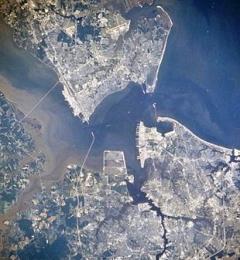
Newport News is located at 37 °4 a²15 a³N 76 °29 a²4 a³W / 37.07083 °N 76.48444 °W / 37.07083; -76.48444 (37.071046, -76.484557).
According to the United States Census Bureau, the city has a total area of 119.1 square miles (308 km2), of which, 68.3 square miles (177 km2) of it is land and 50.8 square miles (132 km2) of it (42.64%) is water.
The city is located at the Peninsula side of Hampton Roads in the Tidewater region of Virginia, bordering the Atlantic Ocean. The Hampton Roads Metropolitan Statistical Area (officially known as the Virginia Beach-Norfolk-Newport News, VA-NC MSA) is the 35th largest in the United States, with a total population of 1,576,370. The area includes the Virginia cities of Norfolk, Virginia Beach, Chesapeake, Hampton, Newport News, Poquoson, Portsmouth, Suffolk, Williamsburg, and the counties of Gloucester, Isle of Wight, James City, Mathews, Surry, and York, as well as the North Carolina county of Currituck. Newport News serves as one of the business centers on the Peninsula. The city of Norfolk is recognized as the central business district, while the Virginia Beach oceanside resort district and Williamsburg are primarily centers of tourism.
Newport News shares land borders with James City County on the northwest, York County on the north and northeast, and Hampton on the east. Newport News shares water borders with Portsmouth on the southeast and Suffolk on the south across Hampton Roads, and Isle of Wight County on the southwest and west and Surry County on the northwest across the James River.
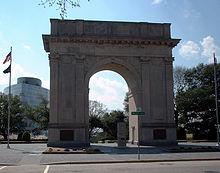
The older "downtown" area was part of the earlier portion which became a city in 1896. The earlier city portions includes the traditional downtown area, the shipyard and coal piers. After World War II, public housing projects and lower income housing were built to improve housing in what came to be known as the East End or "The Bottom" by locals. The city expanded primarily westward where land was available and highways were built. While the shipyard and coal facilities, and other smaller harbor-oriented businesses have remained vibrant, the downtown area went into substantial decline. Crime problems have plagued the nearby lower-income residential areas.
West of the traditional downtown area, another early portion of the city was developed as Huntington Heights. In modern times been called the North End. Developed primarily between 1900 and 1935, North End features a wealth of architectural styles and eclectic vernacular building designs. Extending along west to the James River Bridge approaches, it includes scenic views of the river. A well-preserved community, the North End is an historic district listed on the National Register of Historic Places and the Virginia Landmarks Register.
The 1958 merger by mutual agreement with the City of Warwick removed the political boundary, which was adjacent to Mercury Boulevard. This major north-south roadway carries U.S. Route 258 between the James River Bridge and the Coliseum-Central area of adjacent Hampton.
At the time, the county was mostly rural, although along Warwick Boulevard north of the Mercury Boulevard, Hilton Village was developed during World War I as a planned community. Beyond this point to the west, much of the city takes on a suburban nature. Many neighborhoods have been developed, some around a number of former small towns. Miles of waterfront along the James River, and tributaries such as Deep Creek and Lucas Creek, are occupied by higher-end single family homes. In many sections, wooded land and farms gave way to subdivisions. Even at the northwestern reaches, furthest from the traditional downtown area, some residential development has occurred. Much land has been set aside for natural protection, with recreational and historical considerations. Along with some newer residential areas, major features of the northwestern end include the reservoirs of the Newport News Water System (which include much of the Warwick River), the expansive Newport News Park, a number of public schools, and the military installations of Fort Eustis and a small portion of the Naval Weapons Station Yorktown.
At the extreme northwestern edge adjacent to Skiffe's Creek and the border with James City County is the Lee Hall community, which retains historical features including the former Chesapeake and Ohio Railway station which served tens of thousands of soldiers based at what became nearby Fort Eustis during World War I and World War II. The larger-than-normal rural two-story frame depot is highly valued by rail fans and rail preservationists.
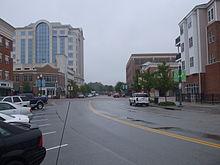
In downtown Newport News, the Victory Arch, built to commemorate the Great War, sits on the downtown waterfront. The "Eternal Flame" under the arch was cast by Womack Foundry, Inc. in the 1960s. It was hand crafted by the Foundry's founder and president, Ernest D. Womack. The downtown area has a number of landmarks and architecturally interesting buildings, which for some time were mostly abandoned in favor of building new areas in the northwest areas of the city (a strategy aided by tax incentives in the postwar years).
City leaders are working to bring new life into this area, by renovating and building new homes and attracting businesses. The completion of Interstate 664 restored the area to access and through traffic which had been largely rerouted with the completion of the Hampton Roads Bridge-Tunnel in 1958 and discontinuance of the Newport News-Norfolk ferry service at that time. The larger capacity Monitor-Merrimac Memorial Bridge-Tunnel and the rebuilt James River Bridge each restored some accessibility and through traffic to the downtown area.
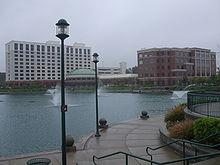
Much of the newer commercial development has been along the Warwick Boulevard and Jefferson Avenue corridors, with newer planned industrial, commercial, and mixed development such as Oyster Point, Kiln Creek and the City Center. While the downtown area had long been the area of the city that offered the traditional urban layout, the city has supported a number of New Urbanism projects. One is Port Warwick, named after the fictional city in William Styron's novel, Lie Down in Darkness. Port Warwick includes housing for a broad variety of citizens, from retired persons to off-campus housing for Christopher Newport University students. Also included are several high-end restaurants and upscale shopping.
City Center at Oyster Point, located near Port Warwick, has been touted as the new "downtown" because of its new geographic centrality on the Virginia Peninsula, its proximity to the retail/business nucleus of the city, etc. Locally, it is often called simply "City Center". Nearby, the Virginia Living Museum recently completed a $22.6 million expansion plan.
Other New Urbanism projects in planning include "Asheton", a mega-development at the north end of the city, bordering the city aos historic attractions of that area.
Newport News is also home to a small Korean ethnic enclave on Warwick Boulevard near the Denbigh neighborhood on the northern end of the city. Although it lacks the density and character of larger, more established enclaves, it has been referred to as "Little Seoul" aebeing the commercial center for the Hampton Roads Korean community.
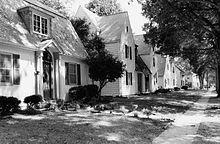
Newport News has many distinctive communities and neighborhoods within its boundaries, including Brentwood, City Center, Colony Pines, Christopher Shores-Stuart Gardens, Denbigh, East End, Glendale, Hidenwood, Hilton Village, Hunter's Glenn, Ivy Farms, North End Huntington Heights (Historic District - roughly from 50th to 75th street, along the James River), Jefferson Avenue Park, Kiln Creek, Lee Hall, Menchville, Morrison (also known as Harpersville), Newmarket, Oyster Point, Parkview, Port Warwick, Richneck, Riverside, Summerlake, Village Green, and Warwick.
The mean annual temperature is 70 °F (21 °C), with an average annual snowfall of 6 inches (150 mm) and an average annual rainfall of 47 inches (1,200 mm). No measurable snow fell in 1999. The wettest seasons are the spring and summer, although rainfall is fairly constant all year round. The highest recorded temperature was 105.0 °F (40.6 °C) in 1980. The lowest recorded temperature was na3 °F ( na19.4 °C) on January 21, 1985.
Additionally, the geographic location of the city, with respect to the principal storm tracks, is especially favorable, as it is south of the average path of storms originating in the higher latitudes, and north of the usual tracks of hurricanes and other major tropical storms.
As of the census of 2010, there were 180,719 people, 69,686 households, and 46,341 families residing in the city. The population density was 2,637.9 people per square mile (1,018.5/km ²). There were 74,117 housing units at an average density of 1,085.3 per square mile (419.0/km ²). The racial makeup of the city was 49.0% White, 40.7% African American, 0.5% Native American, 2.7% Asian, 0.2% Pacific Islander, 2.7% from other races, and 4.3% from two or more races. Hispanic or Latino of any race were 7.5% of the population (2.5% Puerto Rican, 2.5% Mexican, 0.4% Cuban, 0.3% Panamanian, 0.2% Dominican, 0.2% Guatemalan, 0.2% Honduran).
There were 69,686 households out of which 35.7% had children under the age of 18 living with them, 44.6% were married couples living together, 17.9% had a female householder with no husband present, and 33.5% were non-families. 27.0% of all households were made up of individuals and 8.1% had someone living alone who was 65 years of age or older. The average household size was 2.50 and the average family size was 3.04.
The age distribution is: 27.5% under the age of 18, 11.5% from 18 to 24, 32.2% from 25 to 44, 18.8% from 45 to 64, and 10.1% who were 65 years of age or older. The median age was 32 years. For every 100 females there were 93.8 males. For every 100 females age 18 and over, there were 90.3 males.
The median income for a household in the city was $36,597, and the median income for a family was $42,520. Males had a median income of $31,275 versus $22,310 for females. The per capita income for the city was $17,843. About 11.3% of families and 13.8% of the population were below the poverty line, including 20.6% of those under age 18 and 9.8% of those age 65 or over.
Newport News experienced 20 murders giving the city a murder rate of 10.8 per 100,000 people in 2005. In 2006, there were 19 murders giving the city a rate of 10.5 per 100,000 people. In 2007 the city had 28 murders with a rate of 15.8 per 100,000 people. The total crime index rate for Newport News is 434.7, the United States average is 320.9. According to the Congressional Quarterly Press '2008 City Crime Rankings: Crime in Metropolitan America, Newport News, Virginia ranks as the 119th most dangerous city larger than 75,000 inhabitants.
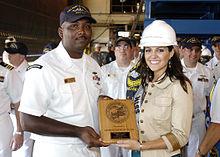
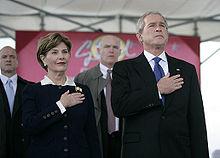
Among the city's major industries are shipbuilding, military, and aerospace. Newport News Shipbuilding, owned by Huntington Ingalls Industries, and the large coal piers supplied by railroad giant CSX Transportation, the modern Fortune 500 successor to the Chesapeake and Ohio Railway (C&O). Miles of the waterfront can be seen by automobiles crossing the James River Bridge and Monitor-Merrimac Memorial Bridge-Tunnel, which is a portion of the circumferential Hampton Roads Beltway, linking the city with each of the other major cities of Hampton Roads via Interstate 664 and Interstate 64. Many U.S. defensive industry suppliers are based in Newport News, and these and nearby military bases employ many residents, in addition to those working at the shipyard and in other harbor-related vocations.
Newport News plays a role in the maritime industry. At the end of CSX railroad tracks lies the Newport News Marine Terminal. Covering 140 acres (0.57 km2), the Terminal has heavy-lift cranes, warehouse capabilities, and container cranes.
Newport News' location next to Hampton Roads along with its rail network has provided advantages for the city. The city houses two industrial parks which enabled manufacturing and distribution to take root in the city. As technology-oriented companies flourished in the 1990s, Newport News became a regional center for technology companies.
Additional companies headquartered out of Newport News include Ferguson Enterprises and L-3 Flight International Aviation.
Northrop Grumman Newport News Shipbuilding serves as the city's largest employer with over 15,000 employees. Fort Eustis employs over 10,000, making it the second largest employer in the city. Newport News School System creates over 5000 jobs and acts as the city's third largest employer.
Established during World War I at historic Mulberry Island, the large base at Fort Eustis in modern times hosts the U.S. Army's Transportation Corps and other important activities. In adjacent localities, other U.S. military facilities include Fort Monroe, Langley Air Force Base, Naval Weapons Station Yorktown, and Camp Peary. Across the harbor in South Hampton Roads, the world's largest naval base, the Naval Station Norfolk and other installations are also located.
Research and education play a role in the City's economy. The Thomas Jefferson National Accelerator Facility (TJNAF) is housed in Newport News. TJNAF employs over 675 people and more than 2,000 scientists from around the world conduct research using the facility. Formerly named the Continuous Electron Beam Accelerator Facility (CEBAF), its stated mission is "to provide forefront scientific facilities, opportunities and leadership essential for discovering the fundamental structure of nuclear matter; to partner in industry to apply its advanced technology; and to serve the nation and its communities through education and public outreach."
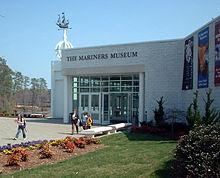
As with most of Virginia, Newport News is most often associated with the larger American South. People who have grown up in the Hampton Roads area have a unique Tidewater accent which sounds different than a stereotypical Southern accent. Vowels have a longer pronunciation than in a typical southern accent.
Near the city's western end, a historic C&O railroad station, as well as American Civil War battle sites near historic Lee Hall along U.S. Route 60 and several 19th century plantations have all been protected. Many are located along the roads leading to Yorktown and Williamsburg, where many sites of the Historic Triangle are of both American Revolutionary War and Civil War significance. The first modern duel of ironclad warships, the Battle of Hampton Roads, took place not far off Newport News Point in 1862.
Recovered artifacts from the USS Monitor are displayed at the Mariners' Museum, one of the more notable museums of its type in the world. The Museum aos collection totals approximately 35,000 artifacts, of which approximately one-third are paintings and two-thirds are three-dimensional objects. The scope of the Museum's collection is international. Included are 10 permanent galleries, changing and traveling exhibits, and virtual galleries available through the museum website. The collection of over 600,000 prints and 35,000 maritime artifacts is international in scope and includes miniature ship models, scrimshaw, maritime paintings, decorative arts, carved figureheads, and working steam engines.
The Virginia War Museum covers American military history. The Museum's collection includes, weapons, vehicles, artifacts, uniforms and posters from various periods of American history. Highlights of the Museum's collection include a section of the Berlin Wall and the outer wall from Dachau Concentration Camp.
The Peninsula Fine Arts Center contains a rotating gallery of art exhibits. The Center also maintains a permanent "Hands On For Kids" gallery designed for children and families to interact in what the Center describes as "a fun, educational environment that encourages participation with art materials and concepts."
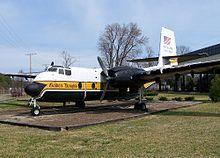
The U.S. Army Transportation Museum is a United States Army museum of vehicles and other U. S. Army transportation-related equipment and memorabilia. Located on the grounds of Fort Eustis, The museum reflects the history of the Army, especially of the United States Army Transportation Corps, and includes close to 100 military vehicles such as land vehicles, watercraft and rolling stock, including stock from the Fort Eustis Military Railroad. It is officially dedicated to General Frank S. Besson, Jr., who was the first four-star general to lead the transportation command, and extends over 6 acres (24,000 m2) of land, air and sea vehicles and indoor exhibits. The exhibits cover transportation and its role in US Army operations, including topic areas from the American Revolutionary War through operations in Afghanistan.
The Ferguson Center for the Arts is a theater and concert hall on the campus of Christopher Newport University. The complex fully opened in September 2005 and contains three distinct, separate concert halls: the Concert Hall, the Music and Theatre Hall, and the Studio Theatre.
The Port Warwick area hosts the annual Port Warwick Art and Sculpture Festival where art vendors gather in Styron Square to show and sell their art. Judges have the chance to name art work best of the Festival.
The Virginia Living Museum is an outdoor living museum combining aspects of a native wildlife park, science museum, aquarium, botanical preserve, and planetarium.
Newport News has been the home to sports franchises, including the semi-pro football Mason Dixon League's Peninsula Pirates and Peninsula Poseidons and now the Virginia Crusaders. The Christopher Newport University Captains field fourteen sports and compete in the USA South Athletic Conference in Division III of the NCAA.
High school sports play a large role in the City's culture. Sporting stars such as Allen Iverson, Michael Vick, Mike Tomlin, Scorpio Brown, Aaron Brooks and Antoine Bethea are from Newport News. The City's stadium, John B. Todd Stadium, houses five high schools' worth of football games usually spread over Thursday, Friday, and Saturday nights. The stadium also holds the schools' track and field meets.
Additional sports options can be found just outside Newport News. On the collegiate level, the College of William and Mary, Hampton University, Norfolk State University and Old Dominion University offer NCAA Division I athletics. Virginia Wesleyan College also provides sports at the NCAA Division III level. The Peninsula Pilots play just outside the city limits at War Memorial Stadium in Hampton. The Pilots play in the Coastal Plain League, a summer baseball league. In Norfolk, the Norfolk Tides of the International League and the Norfolk Admirals of the American Hockey League. In Virginia Beach, the Hampton Roads Piranhas field men's and women's professional soccer teams. The Atlantic 10 Conference has been headquartered in Newport News since the Fall of 2009.
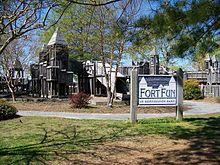
Newport News Parks is responsible for the maintenance of thirty-two city parks. The smallest is less than half an acre (2,000 m ²). The largest, Newport News Park, is 8,065 acres (32.64 km2), the second-largest city park in the United States. The parks are scattered throughout the city, from Endview Plantation in the northern end of the city to King-Lincoln Park in the southern end near the Monitor-Merrimac Memorial Bridge-Tunnel. The parks offer a variety of services to visitors, ranging from traditional park services like camping and fishing to activities like archery and disc golf.
Newport News Park is located in the northern part of the city of Newport News. The city's golf course also lies within the Park along with camping and outdoor activities. There are over 30 miles (48 km) of trails in the Newport News Park complex. The park has a 5.3 miles (8.5 km) multi-use bike path. The park offers bicycle and helmet rental, and requires helmet use by children under 14. Newport News Park also offers an archery range, disc golf course, and an "aeromodel flying field" for remote-controlled aircraft, complete with a 400 ft (120 m) runway.
The city also supplies two public boat ramps for its citizens, Denbigh Park Boat Ramp and Hilton Pier/Ravine. Denbigh Park allows access into the Warwick River, a tributary of the James River. Denbigh Park also offers a small fishing pier. Hilton Pier offers a small beach at the location of the park in addition to a Ravine. Croaker and trout are the fish primarily caught during the summer months and the pier is accessible to visitors in wheelchairs.
Newport News's daily newspaper is the Daily Press. Other papers include the Port Folio Weekly, the New Journal and Guide, the Hampton Roads Business Journal, and the James River Journal.
Christopher Newport University publishes its own newspaper, The Captain's Log. Hampton Roads Magazine serves as a bi-monthly regional magazine for Newport News and the Hampton Roads area. Hampton Roads Times serves as an online magazine for all the Hampton Roads cities and counties. Newport News is served by a variety of radio stations on the AM and FM dials, with towers located around the Hampton Roads area.
Newport News is also served by several television stations. The Hampton Roads designated market area (DMA) is the 43rd largest in the U.S. with 712,790 homes (0.64% of the total U.S.). The major network television affiliates are WTKR-TV 3 (CBS), WAVY 10 (NBC), WVEC-TV 13 (ABC), WGNT 27 (CW), WTVZ 33 (MyNetworkTV), WVBT 43 (Fox), and WPXV 49 (ION Television). The Public Broadcasting Service station is WHRO-TV 15. Newport News residents also can receive independent stations, such as WSKY broadcasting on channel 4 from the Outer Banks of North Carolina and WGBS-LD broadcasting on channel 11 from Hampton.
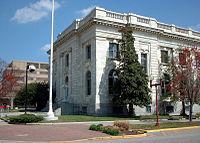
Newport News is an independent city with services that both counties and cities in Virginia provide, such as a sheriff, social services, and a court system. Newport News operates under a council-manager form of government.
Newport News city government consists of a city council with representatives from three districts serving in a legislative and oversight capacity, as well as a popularly elected, at-large mayor. The city manager serves as head of the executive branch and supervises all City departments and executing policies adopted by the Council. Citizens in each of the three wards elect two council representatives each to serve a four-year term. The city council meets at City Hall twice a month and, as of July, 2010, consists of: Mayor McKinley L. Price, DDS, Vice Mayor Madeline McMillan, Herbert H. Bateman Jr., Sharon P. Scott, Dr. Patricia "Pat" Woodbury, Tina L. Vick, and Joseph C. Whitaker. The City Manager is Neil A. Morgan. For the first time in the history of Newport News there is a female majority on the city council.
Newport News also has a federal courthouse for the United States District Court for the Eastern District of Virginia. A new courthouse will be constructed in the future. Additionally, Newport News has its own General District and Circuit Courts which convene downtown.
Newport News is located in the Virginia's 1st congressional district, served by U.S. Representative Rob Wittman and in the Virginia's 3rd congressional district, served by U.S. Representative Robert C. Scott.
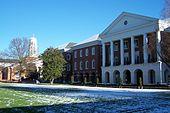
The main provider of primary and secondary education in the city is Newport News Public Schools. The school system includes many elementary schools, six middle schools, and the high schools, Denbigh High School, Heritage High School, Menchville High School, Warwick High School and Woodside High School. All middle, high schools, and elementary schools are fully accredited. Dutrow Elementary is an example of an elementary school that offers a Talented And Gifted program for fifth graders, or rising sixth graders. Warwick High School is widely known for its IB program to prepare students at all grade levels for college course levels of thinking.
Several private schools are located in the area, including Denbigh Baptist Christian School, Hampton Roads Academy, Peninsula Catholic High School,, Trinity Lutheran School and Warwick River Christian School.
The city contains Christopher Newport University, a public university. Other nearby public universities include Old Dominion University, Norfolk State University and The College of William and Mary. Hampton University, a private university, also sits a few miles from the City limits. Thomas Nelson Community College serves as the community college. Located in neighboring Hampton and in nearby Williamsburg, Thomas Nelson offers college and career training programs. Most institutions in the Hampton Roads areas are home to a variety of students but commuter students make up a large portion.
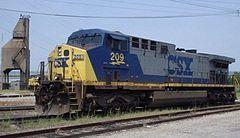
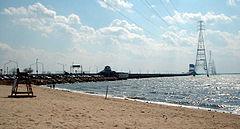
Newport News has an elaborate transportation network, including interstate and state highways, bridges and a bridge-tunnel, freight and passenger railroad service, local transit bus and intercity bus service, and a commercial airport. There are miles of waterfront docks and port facilities.
Newport News is served by three airports. Newport News/Williamsburg International Airport, located in Newport News, Norfolk International Airport, in Norfolk, and Richmond/Byrd International Airport all of which cater to passengers from Hampton Roads. The primary airport for the Virginia Peninsula is the Newport News/Williamsburg International Airport. As of 2011, the airport was experiencing a 5th year of record, double-digit growth, making it one of the fastest growing airports in the country. In January 2006, the airport reported having served 1,058,839 passengers. On February 4, 2010, the airport announced a new airline, Frontier Airlines, with direct flights to Denver, Colorado. It is also undergoing a $23 million expansion project. (IATA: PHF, ICAO: KPHF, FAA LID: PHF), Norfolk International Airport (IATA: ORF, ICAO: KORF, FAA LID: ORF) also serves the region. The airport is located near Chesapeake Bay, along the city limits of Norfolk and Virginia Beach. Seven airlines provide nonstop services to twenty five destinations. ORF had 3,703,664 passengers take off or land at its facility and 68,778,934 pounds of cargo were processed through its facilities. The Chesapeake Regional Airport provides general aviation services and is located on the other side of the Hampton Roads Harbor.
Amtrak serves the city with four trains a day. The line runs west along the Virginia Peninsula to Richmond and points beyond. Connecting buses are available to Norfolk and Virginia Beach. A high speed rail connection at Richmond to both the Northeast Corridor and the Southeast High Speed Rail Corridor is also under study.
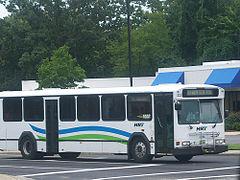
Intercity bus service is provided by Greyhound Lines (Carolina Trailways). The bus station is located on Warwick Boulevard in the Denbigh area. Transportation within the city, as well as with other major cities of Hampton Roads is served by a regional bus service, Hampton Roads Transit. A connecting service for local routes serving Williamsburg, James City County, and upper York County is operated by Williamsburg Area Transport at Lee Hall.
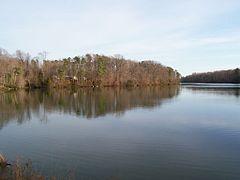
The Newport News Waterworks was begun as a project of Collis P. Huntington as part of the development of the lower peninsula with the Chesapeake and Ohio Railway, the coal piers on the harbor of Hampton Roads, and massive shipyard which were the major sources of industrial growth which helped found Newport News as a new independent city in 1896. It included initially an impingement of the Warwick River in western Warwick County. Later expansions included more reservoirs, including one at Skiffe's Creek and another near Walker's Dam on the Chickahominy River.
A regional water provider, in modern times it is owned and operated by the City of Newport News, and serves over 400,000 people in the cities of Hampton, Newport News, Poquoson, and portions of York County and James City County.[100]
The City provides wastewater services for residents and transports wastewater to the regional Hampton Roads Sanitation District treatment plants.[101]
Newport News is served by two acute care hospitals. The largest facility is Riverside Regional Medical Center (a part of the Riverside Health System) and the second is Mary Immaculate Hospital (a part of the Bon Secours Hampton Roads Health System).
Riverside Hospital also known as Riverside Regional Medical Center (a Regional Referral Hospital), began serving the Virginia Peninsula community in 1916. In 1963 the Riverside Hospital was moved to the present 56-acre location in Newport News on J. Clyde Morris Boulevard in the heart of the city of Newport News. As a 510-bed regionally recognized facility, Riverside Regional Medical Center is the Virginia Peninsula aos most comprehensive medical facility combining the most recent computerized medical technology with a healing environment. The Emergency Department and Level II Trauma Center responds to more than 57,000 emergencies annually. Riverside aos ED/Trauma Center and features 42 private rooms and the prompt, efficient care and excellent quality you expect from Riverside. Services at Riverside Regional Medical Center range from interventional cardiology to open heart surgery to cardiac rehabilitation, the Heart Center puts the newest technologies into action every day. An expanding scope of services, mobile technologies and the progressive thinking of talented cardiac physicians combine to bring unmatched excellence in heart medicine. Riverside provides progressive birthing options for parents. With more than 3000 babies born here each year, local obstetricians and expectant parents choose Riverside more often than any other area hospital. In addition an 18-bed Neonatal Intensive care unit and on-site neonatalogists give parents the security of knowing that expert care is just minutes away, should baby need a helping hand. The nationally accredited regional cancer treatment center provides sophisticated treatment and care. An oncology Intensive Care Unit is the only Peninsula facility to provide stem cell and autologous bone marrow transplants. Riverside diagnostic testing provides your doctor with valuable information needed to plan the best course of treatment. The range of on-site testing includes: magnetic resonance imaging (MRI), CT, PET, ultrasound, nuclear medicine, electrocardiography (EKG), cardiac testing and digital mammography.
In 1952, Mary Immaculate Hospital opened its doors to provide exceptional medical care in the only faith-based hospital on the Peninsula. Since then, their mission has evolved and grown, but one thing has remained constant - the hospital provides the highest quality care using the most innovative procedures and caring health care professionals in the region. The Mary Immaculate Hospital is aj acute care hospital, and was relocated to the Denbigh area of the city and offers a wide range of services, including minimally invasive surgery, orthopedic services, The Liver Institute of Virginia, and women's services. The award winning services available at Bon Secours Mary Immaculate Hospital:
Newport News has three sister cities:[102]
 This article incorporates text from a publication now in the public domain: Chisholm, Hugh, ed. (1911). EncyclopR¦dia Britannica (11th ed.). Cambridge University Press.
This article incorporates text from a publication now in the public domain: Chisholm, Hugh, ed. (1911). EncyclopR¦dia Britannica (11th ed.). Cambridge University Press.
Word Count: 7676






